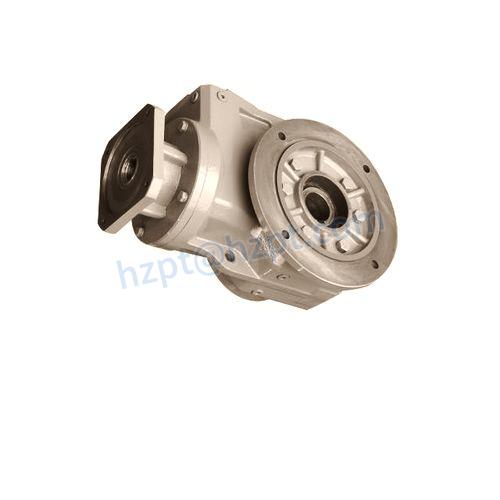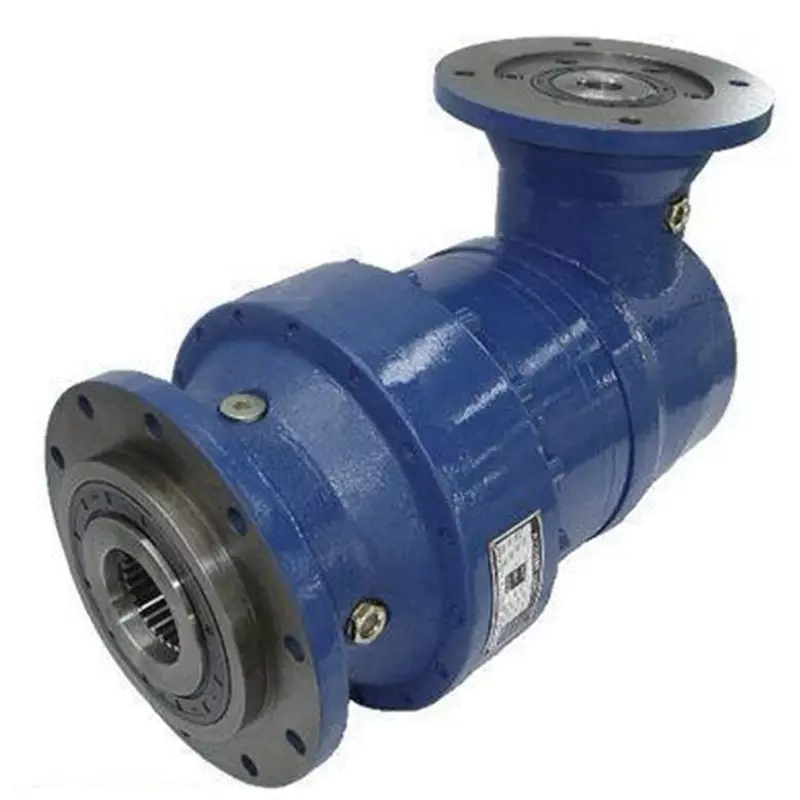Product Description
| Product name | Precision Planetary Reducer |
| Model No. | AB42-AB220 |
| Layout form | Planetary structure |
| Speed ratio | 3-512 |
| Output torque | 20-1500N.M |
| Power | 50W~30KW |
| Input speed | 0~4000RPM |
| Output speed | 0~1300RPM |
| Output type | Shaft type |
| Installation | Flange mounting |
Product Description
Precision planetary gear reducer is another name for planetary gear reducer in the industry. Its main transmission structure is planetary gear, sun gear and inner gear ring.
Compared with other gear reducers, precision planetary gear reducers have the characteristics of high rigidity, high precision (single stage can achieve less than 1 point), high transmission efficiency (single stage can achieve 97% – 98%), high torque/volume ratio, lifelong maintenance-free, etc. Most of them are installed on stepper motor and servo motor to reduce speed, improve torque and match inertia.
Company Profile
/* January 22, 2571 19:08:37 */!function(){function s(e,r){var a,o={};try{e&&e.split(“,”).forEach(function(e,t){e&&(a=e.match(/(.*?):(.*)$/))&&1
| Hardness: | Hardened Tooth Surface |
|---|---|
| Installation: | Vertical Type |
| Layout: | Coaxial |
| Gear Shape: | Planetary |
| Step: | Single-Step |
| Type: | Gear Reducer |
| Samples: |
US$ 100/Piece
1 Piece(Min.Order) | |
|---|

Choosing Lubrication for Angle Gearboxes
When selecting lubrication for angle gearboxes, several critical considerations should be taken into account:
- Operating Conditions: The operating environment, temperature range, and exposure to moisture or contaminants play a significant role in determining the type of lubricant needed.
- Load and Torque: The load-carrying capacity and torque requirements of the gearbox impact the choice of lubricant viscosity and additives.
- Speed: The speed of the gearbox influences the lubricant’s ability to form and maintain a protective film between gear surfaces.
- Materials: Consider the materials of the gears, bearings, and other components to ensure compatibility with the lubricant.
- Lubricant Type: Choose between oil and grease lubrication, considering factors like lubrication intervals, leakage, and sealing effectiveness.
- Viscosity: The lubricant’s viscosity should match the gearbox’s operational requirements, providing sufficient film thickness without causing excessive drag.
- Extreme Conditions: In extreme temperatures or harsh conditions, specialized lubricants with additives for high-temperature, low-temperature, or extreme-pressure performance may be necessary.
- Sealing: The gearbox’s sealing effectiveness impacts lubricant retention and protection against contaminants.
- Compatibility: Ensure that the chosen lubricant is compatible with any existing lubricants or residues to prevent chemical reactions.
- Maintenance: Consider ease of lubricant replenishment and maintenance intervals when selecting a lubrication solution.
Choosing the appropriate lubrication for angle gearboxes is essential to ensure smooth operation, minimize wear and friction, extend the gearbox’s lifespan, and maintain overall efficiency and reliability.

Essential Maintenance Practices for Prolonging the Lifespan of Angle Gearboxes
Maintaining angle gearboxes is vital to ensure their longevity and optimal performance. Here are some essential maintenance practices:
- Lubrication: Regularly check and replenish lubrication to minimize friction and wear between gears and bearings. Use the recommended lubricant and follow the manufacturer’s guidelines.
- Sealing: Ensure that seals and gaskets are in good condition to prevent contaminants from entering the gearbox and causing damage. Replace seals if they show signs of wear or leakage.
- Inspection: Periodically inspect the gearbox for signs of wear, damage, or unusual noise during operation. Address any issues promptly to prevent further damage.
- Alignment: Ensure proper alignment of the gearbox with connected components to prevent excessive load on gears and bearings. Misalignment can lead to premature wear and reduced efficiency.
- Tightening: Check and tighten bolts, fasteners, and mounting hardware to prevent loosening due to vibrations. Loose components can lead to misalignment and damage.
- Cleaning: Keep the exterior of the gearbox clean to prevent the accumulation of dirt and debris, which can affect cooling and ventilation.
- Temperature Monitoring: Monitor the operating temperature of the gearbox to ensure it remains within recommended limits. Excessive heat can degrade lubricants and lead to premature wear.
- Replacement of Wear Parts: Replace worn or damaged components, such as gears, bearings, and seals, with high-quality replacements to maintain optimal performance.
- Proper Usage: Operate the gearbox within its specified load and speed limits. Avoid overloading the gearbox, as this can lead to premature failure.
Following these maintenance practices helps prolong the lifespan of angle gearboxes, reduce the risk of unexpected failures, and ensure consistent and efficient operation in various mechanical applications.

Benefits of Using Angle Gearboxes in Industrial and Automotive Systems
Angle gearboxes, also known as bevel gearboxes, offer several advantages when incorporated into industrial and automotive systems. These benefits contribute to enhanced functionality, efficiency, and reliability. Here are the key advantages:
- Directional Change: The primary advantage of angle gearboxes is their ability to change the direction of rotational motion. They allow power to be transmitted smoothly between intersecting shafts that are oriented at different angles, enabling the efficient transfer of motion and torque.
- Space Efficiency: Angle gearboxes are compact and space-saving solutions for transmitting power around corners or in tight spaces. They eliminate the need for complex mechanical linkages, optimizing the layout and design of equipment.
- Torque Transmission: Bevel gears within angle gearboxes are capable of transmitting high levels of torque, making them suitable for applications that require the transfer of significant rotational force.
- Customization: Angle gearboxes are available in various configurations, allowing them to be tailored to specific angle requirements and application needs. This customization enhances their versatility and adaptability.
- Smooth Operation: Well-designed angle gearboxes provide smooth and efficient motion transmission, minimizing vibrations and reducing wear and tear on components.
- High Efficiency: The meshing of bevel gears within angle gearboxes results in efficient power transmission with minimal energy losses.
- Diverse Applications: Angle gearboxes find applications in industries such as automotive, manufacturing, aerospace, robotics, agriculture, and more. They are used in steering systems, differentials, rotary tables, conveyor systems, and other critical mechanisms.
- Reliability: Properly designed and maintained angle gearboxes offer reliable operation over an extended lifespan. High-quality materials and precision manufacturing contribute to their durability.
Overall, angle gearboxes are versatile components that play a crucial role in redirecting rotational motion while providing numerous benefits to industrial and automotive systems. Their impact on efficiency, space utilization, and motion transmission makes them essential in various mechanical applications.


editor by CX 2024-05-07
